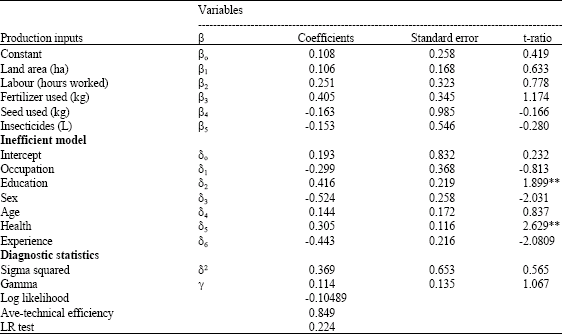Research Article
Impact of Adverse Health on Agricultural Productivity of Farmers in Kainji Basin North-Central Nigeria Using a Stochastic Production Frontier Approach
Department of Agricultural Economics, University of Ibadan, Ibadan, Nigeria
P.C. Ugwu
Department of Agricultural Economics, University of Ibadan, Ibadan, Nigeria










